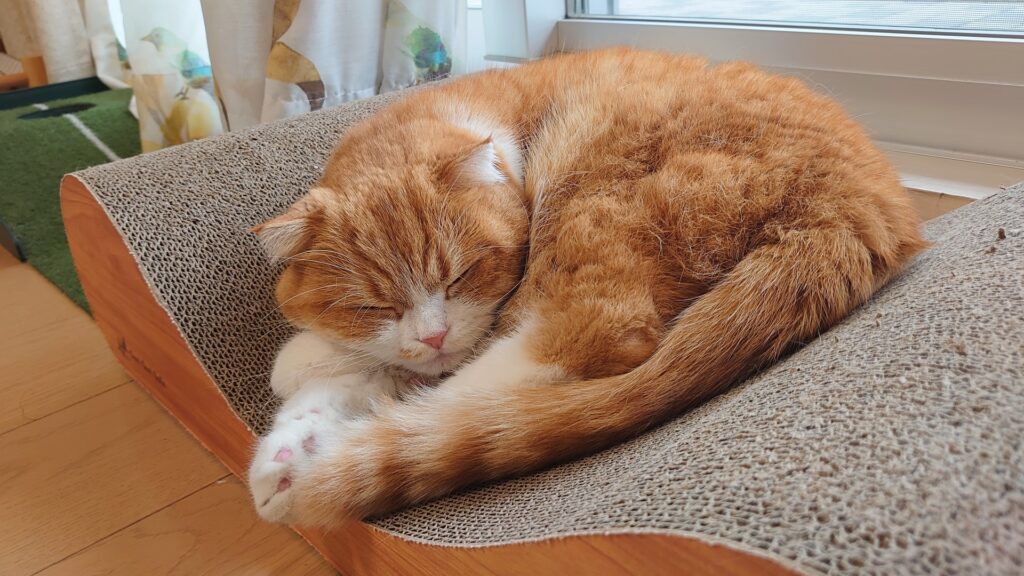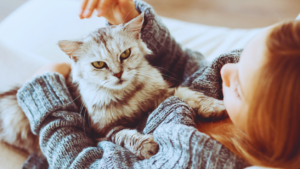How to Detect Illness Through Your Cat's Sleep Patterns
~The Impact of Sleep on Cat’s Health ~
Introduction
Sleep is an essential aspect of a cat's life, contributing significantly to their overall health and well-being. Cats are known for their lengthy sleep habits, often spending up to 16 hours or more each day napping. This article will delve into the importance of sleep for cats, the effects of sleep on their health, and how changes in sleep patterns can indicate potential health issues.

The Importance of Sleep for Cats
- Restoration and Repair: During sleep, a cat's body undergoes vital processes that help restore and repair tissues. This is crucial for maintaining good health, particularly for active or aging cats.
- Energy Conservation: Cats are natural hunters, and even domestic cats retain the instinct to conserve energy for short bursts of activity. Sleep allows them to store energy needed for play, exploration, and hunting behaviors.
- Brain Function and Memory: Sleep is essential for cognitive function and memory consolidation. During REM (Rapid Eye Movement) sleep, a cat's brain processes and stores information gathered throughout the day.
- Immune System Support: Adequate sleep helps support a cat's immune system, making them less susceptible to illnesses and infections. Sleep deprivation can weaken their immune response, leading to health issues.
Normal Sleep Patterns in Cats
- Polyphasic Sleep: Cats are polyphasic sleepers, meaning they sleep multiple times throughout the day and night. Their sleep patterns include several short naps interspersed with periods of activity.
- REM and Non-REM Sleep: Like humans, cats experience both REM and non-REM sleep. REM sleep is associated with dreaming and brain activity, while non-REM sleep is a deeper, more restful state.
- Circadian Rhythms: Cats have circadian rhythms that influence their sleep-wake cycles. These rhythms are typically crepuscular, meaning cats are most active during dawn and dusk.
Signs of Healthy Sleep
- Regular Napping: A healthy cat will take frequent naps throughout the day, often in comfortable and safe spots around the house.
- Comfortable Sleeping Positions: Cats may sleep in various positions, from curled up to stretched out, indicating they feel safe and secure.
- Responsive to Stimuli: Even while asleep, a healthy cat remains somewhat responsive to their environment, such as reacting to loud noises or familiar voices.
Detecting Health Issues Through Sleep Patterns
- Changes in Sleep Duration: Sudden changes in the amount of sleep a cat gets can be a red flag. Sleeping significantly more or less than usual may indicate underlying health problems.
- Excessive Sleepiness: While cats sleep a lot, excessive sleepiness or lethargy can signal issues like anemia, hypothyroidism, or infections.
- Insomnia or Restlessness: Difficulty sleeping or restlessness can be caused by pain, anxiety, or conditions like hyperthyroidism.
- Altered Sleep Positions: If a cat starts sleeping in unusual positions or seems uncomfortable while sleeping, it might be experiencing pain or discomfort. For example, a cat with respiratory issues might sleep with its neck extended to help breathe more easily.
- Increased Vocalization During Sleep: Cats that begin to vocalize more during sleep might be experiencing nightmares, anxiety, or cognitive dysfunction syndrome (similar to dementia in humans).
- Difficulty Waking Up: A cat that is difficult to wake or seems disoriented upon waking could be suffering from a neurological condition or metabolic disorder.
- Frequent Nighttime Activity: Increased activity at night can indicate hyperthyroidism, which causes increased energy levels and restlessness. It can also be a sign of cognitive decline in older cats.
What to Do If You Notice Changes
- Monitor and Record: Keep a log of any changes in your cat’s sleep patterns, including duration, positions, and any associated behaviors like vocalization or restlessness. This information can be valuable for your veterinarian.
- Consult Your Veterinarian: If you notice significant changes in your cat’s sleep patterns, consult your veterinarian. They can perform a thorough examination to determine if there are underlying health issues.
- Provide a Comfortable Sleep Environment: Ensure your cat has a comfortable and quiet place to sleep. Reducing stress and providing a secure environment can help improve sleep quality.
- Regular Health Check-ups: Regular veterinary check-ups can help catch potential health issues early. Discuss any concerns about sleep patterns with your vet during these visits.
CatsMe! is a revolutionary AI that makes it easy to detect such pain in cats by only uploading cat pictures.
Conclusion
Sleep plays a vital role in maintaining your cat’s health, supporting everything from energy levels and immune function to cognitive health and overall well-being. Being attentive to your cat’s sleep patterns can provide early indicators of potential health issues. By understanding what constitutes normal sleep behavior and recognizing changes, you can ensure your cat receives the care they need to stay healthy and happy. If you have any concerns about your cat’s sleep or health, always consult with your veterinarian for guidance and support.



“How to Detect Illness Through Your Cat's Sleep Patterns” に対して1件のコメントがあります。
コメントは受け付けていません。